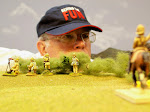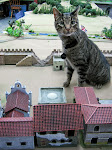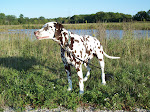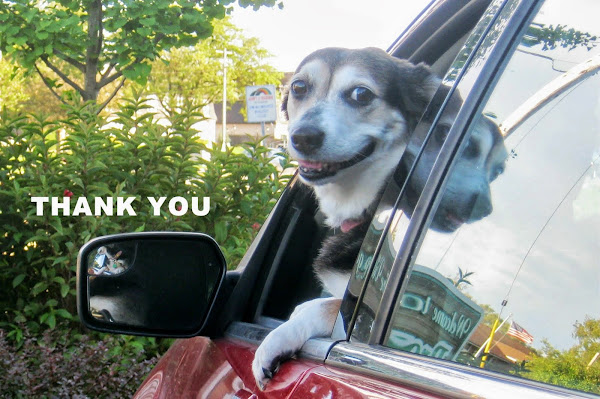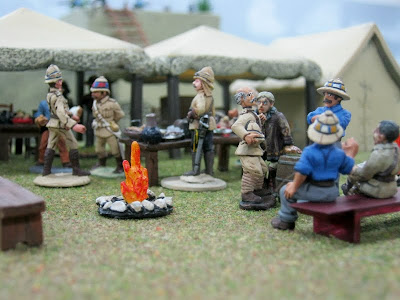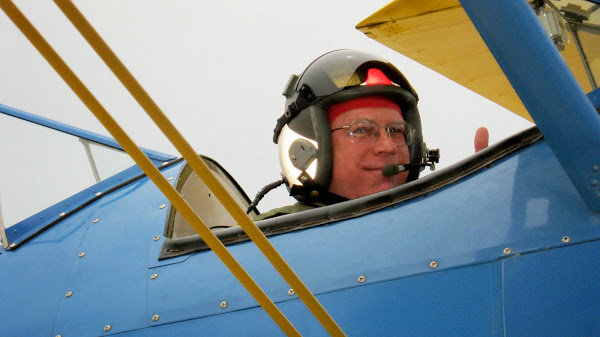May the reason for Christmas fill your homes.
Blessings to all.
Respectfully,
Bill
Friday, December 23, 2011
Tuesday, November 1, 2011
Chapter VII: The Gauntlet
----------
EXPEDITION TO ALEXANDRAPOUR
----------
Date: 31 July 1900
Location: Dakla River
Situation: The Gauntlet
Recommendation: See Chapter VI posted 24 July 2011 here:
http://generalpettygree.blogspot.com/2011/07/chapter-vi-spy.html
The map shown here will be singularly helpful in following the journey
----------
Clicked Images Are Extraordinarily Better
----------
We resume the story of Lt. Col. Lawford's Journey Up The Dakla River.
The Dakla River near the city of Azrou. A pilot boat....
Leads HM Gunboat Zanzibar up river.
On the main deck amidships we see Nazim at the ladder, Colonel Lawford in the blue shirt, Politico Mr. Albert Wyatt in khaki and the enigmatic Colonel Boyle at his cabin door.
Zanzibar's crew exercises the forward gun while others observe adjacent hills. Her speed is only four knots in this narrow and safe section of The Dakla but....
The serenity of the river passage is shockingly altered when shots are fired from the eastern ridge top.
Zanzibar's crew swings around the forward gun and fires, sailors armed with rifles shoot and the Gatling peppers the hillside. Lawford ducked whilst Wyatt and Boyle moved out of sight.
The Gatling suppresses enemy fire.
But Colonel Boyle is hit and lying on the main deck as....
EXPEDITION TO ALEXANDRAPOUR
----------
Date: 31 July 1900
Location: Dakla River
Situation: The Gauntlet
Recommendation: See Chapter VI posted 24 July 2011 here:
http://generalpettygree.blogspot.com/2011/07/chapter-vi-spy.html
The map shown here will be singularly helpful in following the journey
----------
Clicked Images Are Extraordinarily Better
----------
We resume the story of Lt. Col. Lawford's Journey Up The Dakla River.
The Dakla River near the city of Azrou. A pilot boat....
Leads HM Gunboat Zanzibar up river.
On the main deck amidships we see Nazim at the ladder, Colonel Lawford in the blue shirt, Politico Mr. Albert Wyatt in khaki and the enigmatic Colonel Boyle at his cabin door.
Zanzibar's crew exercises the forward gun while others observe adjacent hills. Her speed is only four knots in this narrow and safe section of The Dakla but....
The serenity of the river passage is shockingly altered when shots are fired from the eastern ridge top.
Zanzibar's crew swings around the forward gun and fires, sailors armed with rifles shoot and the Gatling peppers the hillside. Lawford ducked whilst Wyatt and Boyle moved out of sight.
The Gatling suppresses enemy fire.
But Colonel Boyle is hit and lying on the main deck as....
Zanzibar increases speed moving out of range of enemy fire.
----------
CLOSING REMARKS
1. Readers are kindly reminded this is Part VII of a second serial story on the Campaigns of General Pettygree blog. Part VI, The Spy, appeared here on 24 July 2011. This story and General Pettygree's Surajistan Field Force (Chapter 55 recently posted) are occurring at the same time.
2. Col. Lawford was detached from Gen. Pettygree's command due to his unique knowledge of whom he is pursuing. Tally-Ho Colonel!
3. The map mentioned at the very beginning is here: http://generalpettygree.blogspot.com/2011/07/chapter-vi-spy.html
4. Gunboat: A Houston vessel bought from The Virtual Armchair General. http://www.thevirtualarmchairgeneral.com/500-houston.html
5. Crew: Mostly Perry Sudan Naval Brigade painted by John Preece.
6. The water product from Scenic Express is terrific. See: http://www.sceneryexpress.com/prodinfo.asp?number=NH60851
7. Ahoy there lads! Your remarks are entirely welcome.
-------
Sunday, October 16, 2011
Chapter 55: Into The Pass
----------
THE SURAJISTAN FIELD FORCE
----------
Date: 8-12 July 1900
Location: An Unnamed Mountain Pass
Situation: Marching Deeper Into The Interior
Recommendation: See Chapter 54
Right Click Images To See More
----------
Caddy: "Sir, may I inquire about your business here?"
Golitsyn: "I am to speak to the General Pettygree."
Caddy: "He is across the river which I pray you know."
Golitsyn: "Da (yes)"
Caddy: "Soon Sir -- when I can assemble an escort."
When circumstances permitted, Golitsyn was taken to General Pettygree not as a prisoner of war but rather as an uninvited guest. At the evening campfire....
Golitsyn: "A state of war does not exist between our two nations. We did not engage your force though several of my party were regrettably slain by your random artillery fire. I was near an explosion, apparently experienced a blackout and was left behind in the tumult of retreat. Your men found me."
Pettygree: "You are observers then?"
Trooper Corey: "Captain Sachs' compliments Sir."
Captain Khambatta: "What news?"
Trooper Hamm: "Sir. No enemy in sight around the hairpin curve just ahead."
Accordingly the march continued. Khambatta's two piquet lines keep wary eyes looking in all directions. The Main Guard of twelve Sikhs reinforced by a screw gun are ready just behind to render immediate assistance if needed. The rest of the battalion follows in column of march.
The hairpin turn is easily negotiated by the aforementioned units plus the 27th Bombay Miners and Sappers (dark khaki uniforms) and the leading company of the 2nd. Sikh Battalion (right center). Let's reposition to the rear of the 2nd. Sikhs now shall we?
A better view of the 2nd. Sikh Battalion and 1st Mountain Battery.
As we return to the Advance Guard and the infantry piquet, a critical aspect of mountain marching is....
That's them behind cover (right center) looking over a slight rise of ground into the distance.
Captain Sachs: "What do you see troopers?"
THE SURAJISTAN FIELD FORCE
----------
Date: 8-12 July 1900
Location: An Unnamed Mountain Pass
Situation: Marching Deeper Into The Interior
Recommendation: See Chapter 54
Right Click Images To See More
----------
Surajistan Field Force
The Battle of The Amla on June 30th. temporarily stopped General Pettygree's Surajistan Field Force from pursuing the Thugee Host. A halt of seven days was ordered to rest, bring up supplies and allow the lightly wounded to recover. On 8 July you may remember a singular incident occurred as the Imperials began crossing The Amla River. Let us briefly return to that day when....
8 JULY 1900
Soon after the Advance Guard crossed the Amla River, a Romanov officer was unexpectedly brought to Lt. Caddy RE. A state of war did not exist with the Romanovs so far as anyone knew at that time.Lt. Caddy: "Who the deuce are you?"
Lucy: "Snorts and whinnies!"
Romanov Officer: "Kapitan Golitsyn. Caddy: "Sir, may I inquire about your business here?"
Golitsyn: "I am to speak to the General Pettygree."
Caddy: "He is across the river which I pray you know."
Golitsyn: "Da (yes)"
Caddy: "Soon Sir -- when I can assemble an escort."
When circumstances permitted, Golitsyn was taken to General Pettygree not as a prisoner of war but rather as an uninvited guest. At the evening campfire....
Kapitan Golitsyn: "Your hospitality is appreciated."
General Pettygree: "A professional courtesy Sir. [All pause.] Shall I assume you were associated with the Tug attack on the 30th ultimo?"
Pettygree: "You are observers then?"
Golytsyn: "I can only say my government views the shocking increase in Thugee strength, their intractable fanaticism and many natural advantages of terrain as destabilizing in the region. Your survival keeps them in check and less able to to trouble our southern border with their malevolence. Should you be vanquished, the Czar must naturally seek means to reduce the menace."
Pettygree: "Well captain, I intend to end the menace by diplomacy or the bayonet. Meanwhile, there is the matter of your immediate future. In the morning you will accompany the party returning to Fort Grant with the wounded. I daresay our politicos will assist with your next destination."
12 JULY 1900: FOUR DAYS LATER
After four days of marching the Advance Guard entered another mountain pass. The 2/10th Hussars are in the distance followed by 1st. Sikh piquets. Riders are coming in to report to Captain Khambatta.Trooper Corey: "Captain Sachs' compliments Sir."
Captain Khambatta: "What news?"
Trooper Hamm: "Sir. No enemy in sight around the hairpin curve just ahead."
Accordingly the march continued. Khambatta's two piquet lines keep wary eyes looking in all directions. The Main Guard of twelve Sikhs reinforced by a screw gun are ready just behind to render immediate assistance if needed. The rest of the battalion follows in column of march.
Behind the battalion rides Colonel Preece and the greatly reduced 1/10th Hussars. The squadron commander, Captain Bartlett, remains in hospital. Preece has taken over designating it as his headquarters troop.
The 2nd. Sikhs marching in two divisions are near full strength. The 1st. Mountain battery follows them.
Following the light guns are three Jumbos limbered with two 15 Pounder rifles and one ancient 12 Pounder smoothbore.
As The Column marches around the hairpin curve, more Imperial units come into view. Following the Jumbo's and their heavy guns are the 66th Foot Berkshires, supply elements, the 72nd Seaforth Highlanders and the celebrated 9th Bengal Lancers. Where is General Pettygree?
He rides his grey stallion Express at the head of the Berkshires.
As we return to the Advance Guard and the infantry piquet, a critical aspect of mountain marching is....
Flank protection and....
"Crowning the heights."
Measures such as these prevented surprise attacks and sniping at the vulnerable column especially the animals. Without sufficient numbers of them all would grind to a halt resulting in mission failure.
It would be like....
Shooting fish in a barrel.
The head of The Column has come to a halt. Troopers Corey and Ham signalled Captain Sachs to come forward.
Captain Sachs: "What do you see troopers?"
Trooper Ham: "Begg'n yer pardon Sir, I can't say I know."
----------
CLOSING REMARKS
1. Attrition has affected every unit marching in The Surajistan Field Force. For example, the Berkshires have lost approximately 50%. It can be very easy to track losses, recovered wounded and reinforcements. Assign 1D6 per casualty marking the six possibilities with whatever makes sense to you. For example: 1 = KIA or Invalided Home, 2-4 = Remain in hospital and 5-6 Lightly Wounded Recovers. Results would be worse for those without modern medical assistance - for 1900 that is. Keep it generous though to keep your campaign going.
2. An extremely useful book aimed at junior officers is, Lessons In Imperial Rule. Instructions For British Infantrymen On The Indian Frontier by General Sir Andrew Skeen. The abundance of information germane to Colonial gaming will be prodigiously relevant from skirmish tabletop games to anything larger. See: http://www.naval-military-press.com/india-1908-39/
3. Thank you for your interest. Comments are always welcome below.
----------
Thursday, September 29, 2011
Some Remarks About Colonial Games
--------------------
Jack Scruby's commentaries about planning and playing Colonial historical miniatures games were bedrock foundational for me. Some of this is synthesized below.
--------------------
PLANNING COLONIAL GAMES
Determining the proper ratio of Natives to Imperials is not easy. I don't think there is a specific formula unless TSATF with its twenty plus years of experience has one. Still such a formula will depend on rules weapons and morale, the amount of firearms on both sides and scenario dynamics too. Interesting variables.
It is not as easy as a SYW game where we might simply ask. Jim, please bring 500 Prussian musketeers and 100 heavy cavalry and Randy please bring the same. In a Colonial game the native side usually will have fewer firearms and different morale dynamics. It is at this point we try to fathom how much of each type of combatant to bring onto the tabletop.
In general:
A mostly melee armed native force could outnumber Imperials by 1.5:1, 2:1, 2.5:1 or even - gulp - 3:1.
A mostly musket/rifle armed native force could outnumber Imperials by 1.25:1 or 1.5:1, or a little more.
The bottom line is: All we can do is ponder the above and guess. I don't think there is a bull's eye to hit the perfect ratio. I'm happy with that.
--------------------
Players are usually, logically and hopefully (?) more nervous in Colonial games. This is a different and necessary form of fun game tension. It is unique and properly so. Indeed this is a singular difference offered by Colonial gaming. It needs to be there.
It boils down to players on both sides thinking the other Army is way too numerous or powerful. This happened in August 2011. Readers may want to revisit that game here: http://generalpettygree.blogspot.com/2011/08/chapter-53-2nd-battle-of-amla.html
For a couple of turns several players of both sides understandably thought the opposing force was too powerful or too numerous. As I listened, I politely said something like - carry on - no changes - hang in there - wait and see. As the scenario designer I silently thought - good!
Some will complain. Some will lobby for changes. Some on both sides genuinely believe they will be utterly defeated. Not usually though. I take the position they ought to be nervous this way. Typically I usually stick to my guns and don't change a thing and at the end players happily chat about beating long odds and what might have happened - on both sides - if only....
Lest readers think I have this figured out perfectly, no I do not but the above may prove helpful for some.
Another topic is how to command Imperial and native forces. It's trickier than in a horse and musket game. Plus the native force must be able to move great distances quickly.
--------------------
"Colonel, they're com'n. Thousands of 'em."
"Aye. Stand to and load."
----------
There's nowhere to go and nothing to do but stand your ground and enjoy this different and exiting type of historical miniatures game experience. Your remarks are entirely welcome below.
----------
Jack Scruby's commentaries about planning and playing Colonial historical miniatures games were bedrock foundational for me. Some of this is synthesized below.
--------------------
PLANNING COLONIAL GAMES
Determining the proper ratio of Natives to Imperials is not easy. I don't think there is a specific formula unless TSATF with its twenty plus years of experience has one. Still such a formula will depend on rules weapons and morale, the amount of firearms on both sides and scenario dynamics too. Interesting variables.
It is not as easy as a SYW game where we might simply ask. Jim, please bring 500 Prussian musketeers and 100 heavy cavalry and Randy please bring the same. In a Colonial game the native side usually will have fewer firearms and different morale dynamics. It is at this point we try to fathom how much of each type of combatant to bring onto the tabletop.
In general:
A mostly melee armed native force could outnumber Imperials by 1.5:1, 2:1, 2.5:1 or even - gulp - 3:1.
A mostly musket/rifle armed native force could outnumber Imperials by 1.25:1 or 1.5:1, or a little more.
The bottom line is: All we can do is ponder the above and guess. I don't think there is a bull's eye to hit the perfect ratio. I'm happy with that.
--------------------
Players are usually, logically and hopefully (?) more nervous in Colonial games. This is a different and necessary form of fun game tension. It is unique and properly so. Indeed this is a singular difference offered by Colonial gaming. It needs to be there.
It boils down to players on both sides thinking the other Army is way too numerous or powerful. This happened in August 2011. Readers may want to revisit that game here: http://generalpettygree.blogspot.com/2011/08/chapter-53-2nd-battle-of-amla.html
For a couple of turns several players of both sides understandably thought the opposing force was too powerful or too numerous. As I listened, I politely said something like - carry on - no changes - hang in there - wait and see. As the scenario designer I silently thought - good!
Some will complain. Some will lobby for changes. Some on both sides genuinely believe they will be utterly defeated. Not usually though. I take the position they ought to be nervous this way. Typically I usually stick to my guns and don't change a thing and at the end players happily chat about beating long odds and what might have happened - on both sides - if only....
Lest readers think I have this figured out perfectly, no I do not but the above may prove helpful for some.
Another topic is how to command Imperial and native forces. It's trickier than in a horse and musket game. Plus the native force must be able to move great distances quickly.
--------------------
"Colonel, they're com'n. Thousands of 'em."
"Aye. Stand to and load."
----------
There's nowhere to go and nothing to do but stand your ground and enjoy this different and exiting type of historical miniatures game experience. Your remarks are entirely welcome below.
----------
Saturday, September 3, 2011
Chapter 54: Crossing The Amla River
----------
THE SURAJISTAN FIELD FORCE
----------
Date: 4-8 July 1900
Location: Main Army At The Amla River
Situation: Battle Aftermath And Crossing The Amla
Recommendation: See Chapter 53
Right Click Images To See More
----------
Doctor Watson: "Trooper Ham your wound will allow you to return to duty in three to four days I should think.
Trooper Ham: "Thank you Doctor, Sir. Back to the regiment then?"
Watson: "Yes unless a complication arises - which I doubt."
Colonel Sinclair and his 72nd Seaforth Highlanders are observed by General Pettygree. The 1st Sikhs are on watch in the breastworks looking across The Amla for signs of the vanished foe.
Three officers observe the 2nd Sikhs formation. Left to right: Major Mitchell {ADC to the General}, Political Officer Major David Faraday and Lieutenant Caddy RE.
Close-up view of General Headquarters. General Pettygree (left) is speaking with Lieutenant Caddy RE while other officers relax.
Ahead of them all are the 27th Bombay Miners and Sappers. They and Lieutenant Caddy RE {riding} approach several unoccupied buildings.
And the Canyon Gate. Access into the interior is beyond it.
The men from Bombay easily opened the gate without incident and carefully entered the canyon. Lt. Caddy properly awaited events with his supplies outside.
8. Berkshire Flags: British Napoleonic from: http://www.gmbdesigns.com/
THE SURAJISTAN FIELD FORCE
----------
Date: 4-8 July 1900
Location: Main Army At The Amla River
Situation: Battle Aftermath And Crossing The Amla
Recommendation: See Chapter 53
Right Click Images To See More
----------
4 JULY 1900: IN HOSPITAL
Trooper Corey: "Haloo there Trooper Ham. Oh -- excuse me please -- Doctor."Doctor Watson: "Trooper Ham your wound will allow you to return to duty in three to four days I should think.
Trooper Ham: "Thank you Doctor, Sir. Back to the regiment then?"
Watson: "Yes unless a complication arises - which I doubt."
Corey: "Well now, Trooper Ham, enjoying your 'oliday?"
Ham: "Yes surely mate. Excused duty, reclining about all day, naps, tolerable food. You?"
Corey: "Oh just swanning about the camp since those Thugee chaps ran for the hills. Picknicking later with the General. A regular holiday for me too, ya know."
Watson: "Trooper Ham needs some rest now. In the tent, if you please."
7 JULY 1900: THE MAIN CAMP
One week after the 2nd. Battle of The Amla, Brigadier Blackiston reviewed the Light Cavalry Brigade. Though reduced to three weakened squadrons, several wounded soldiers including Trooper Ham (10th Hussars) have been able to return to duty. In the foreground are two squadrons of 9th Bengal Lancers. On their right are the 10th Hussars.
The Berkshires benefited similarly from lightly wounded men returning to duty.
Colonel Sinclair and his 72nd Seaforth Highlanders are observed by General Pettygree. The 1st Sikhs are on watch in the breastworks looking across The Amla for signs of the vanished foe.
On the east side of the buildings the 2nd. Sikhs are formed up to protect the right flank of the camp. Ammunition boxes have been positioned nearby in case of need.
Village buildings showing the left flank of the 2nd. Sikhs, 1st Sikhs with rifles at high port, the Naval Contingent's Gatling Gun Section and the Seaforth Highlanders in column of march. General Headquarters tents are in the upper left of the image.
General Pettygree: "Tomorrow morning we cross The Amla. The first to cross will be the 27th Bombay Miners and Sappers. Lieutenant, I want you to accompany them to breach the Canyon Gate and proceed further into the interior. Take your explosives along. Scouts report the foe is nowhere in these parts but be ever vigilant for them and mischief.
Lieutenant Caddy RE: "Yes General."
Pettygree: The rest of the Army will follow closely behind in support. Don't hesitate to blow up any difficult obstacles. Questions?"
Caddy: "None Sir. Thank you for the job Sir."
8 JULY 1900: CROSSING THE AMLA RIVER
Early in the morning some 1st Sikhs have crossed The Amla River whilst....
Behind them the rest of the battalion waits to cross in road column of march.
And the Canyon Gate. Access into the interior is beyond it.
The men from Bombay easily opened the gate without incident and carefully entered the canyon. Lt. Caddy properly awaited events with his supplies outside.
He started riding forward when...."
A surprise was brought to the rear; a Romanov officer.
Lt. Caddy: "Who the deuce are you?"
Return next time for the answer.
--------------------
CLOSING REMARKS
1. Ridge Tents:
http://www.architectsofwar.com/blackpowder-2.aspx2. Buildings, campfire and GHQ Tents: http://miniaturebuildingauthority.com/index.asp
3. Bombay Soldiers: http://www.redoubtenterprises.com/shop/?page=shop/browse&category_id=c1814f3282c424ccb3833bd65eff7f2b
4. Some of the medical items: http://www.redoubtenterprises.com/shop/?page=shop/browse&category_id=39e283746521f43295505ad33781d137
5. Other medical staff: http://www.perry-miniatures.com/index2.html
6. 1st and 2nd. Sikhs + Highlanders: http://www.bicorne.net/catalog/index.php/cPath/292_102_162_163/sort/2a/page/2
7. Lt. Caddy: http://www.perry-miniatures.com/index2.html
9. Indian flags: http://flagdude.com/ Fictional flags made at my direction.
10. Romanov is actually a Bulgarian from: http://www.recreationalconflict.com/
11. Comments are welcome as always below.
--------------------
Subscribe to:
Posts (Atom)

